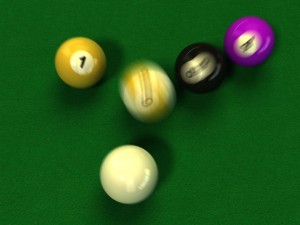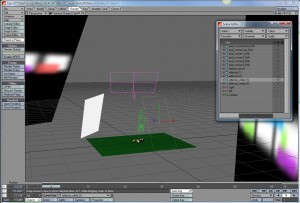With the release of the critically acclaimed film UP by Pixar, we acknowledge that 2009 marks 25 years since the famous Pool Ball shot 1984. In this week’s fxpodcast we talk to Rob Cook of Pixar about the some of the history surrounding that landmark shot, his own career and the industry today. We took a bash at redoing the shot to see just how much easier things are today.
Updated Jun 05, now with three user submissions
This year is the 25th Anniversary of the Pixar 1984 pool ball shot.
In tribute to this landmark image, we speak this week to Pixar’s Rob Cook.
The image was first published at Siggraph, Minneapolis: 1984 in a paper called
Distributed Ray Tracing by Robert Cook, Thomas Porter, and Loren Carpenter.
click here for a copy of the original Siggraph paper
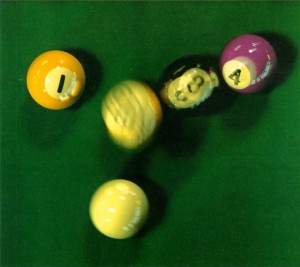
How about today?
Clearly in 2009 it is easy to render an image like this, so we asked some visual effects artists to look at how you would do this image today…and how long it would take?
Matt Leonard
Matt Leonard is a 3D artist living in London. – We got Matt to have a go and his render time today on a single desktop machine ended up being just 1 min 42 seconds. Matt used Maya to do his image, and worked on trying to get his motion blur to work correctly, pointing out that one of the hardest aspects was working out the correct velocities for each ball, to produce the right blur and in the right direction.
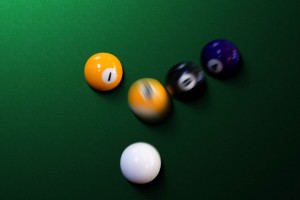
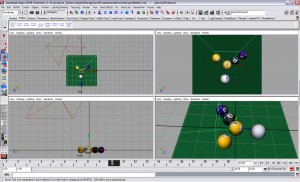
David Stripinis
We asked David Stripinis who is currently finishing up on James Cameron Avatar to see how he would approach the shot.. David pointed out that ideally today he would want to use sub-surface scattering to get the actual ball material to render correctly. David took about 2 hours from start to finish to model, make and render this image, his tool of choice was Modo.
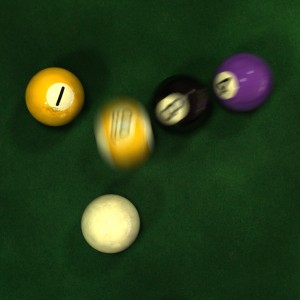
Think you can do better?
Why not do your own version of this historical photo? You can try and match the original pixel by pixel – or just do a modern interpretation of this classic image? Please email us at [email protected] your take on this classic shot. We’ll publish the best images here at fxguide
Update June 1, 2009
And here is your first submission!!
Olivier Cefai: Switzerland
from Oliver: “I’ve played the game and worked on a submission, following the suggested approach: assess what would have been different today compared with then, and do it in a minimum time. I felt it is the true animation true motion blur that should would have been done differently today, so I did the animation with realflow rigid body dynamics and used a true 3d motion blur with finalrender. It has also penumbra (soft shadows occlusion), as well as global illumination (with hdri), blurry reflections and the motion blur is a 180° shutter at 24fps; it was all done in approx 3 hours start to finish.”
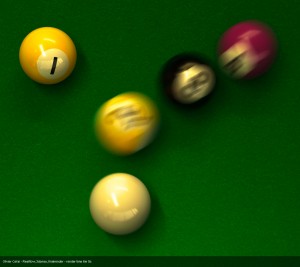
Update June 5, 2009
Two more submissions!!
Mark D. Walczak, Designer ExplosiveGraffix Chicago, IL
from Mark: “Completed in about 3 hours, this piece was my best attempt at Pixar’s famed 1984 render. Going into this little project, I had absolutely no clue as to how motion blur in Cinema4D worked, but I took a few moments to read the help file and got the gist of it. I did my best to create the image as it would have looked coming out the original computer, and not how it would have looked scanned from a magazine (although I considered this approach). The blocking and lighting were completed in about an hour, and the remainder of the time was spent tweaking textures and shaders. Total render time was about eight minutes on a MacPro. ”
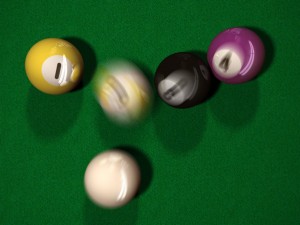
Phil Nolan, Modeler / Animator philnolan3d.com
from Phil: “I took up the challenge of recreating the 1984 shot and I think I did a decent job. This was done in LightWave 3D 9.6. I set up the shot with 2 area lights to get the soft shadows as well as cached Monte Carlo radiosity. I blurred the reflections and used Photoreal Motion Blur as well as a little Depth of Field. As you can see in the attached screenshot I also made up some quick image planes for the balls to reflect. This all took about 3 hours, but much of that time was taken up by trying to match the original Pixar shot. The final render took about 10 mins.”
